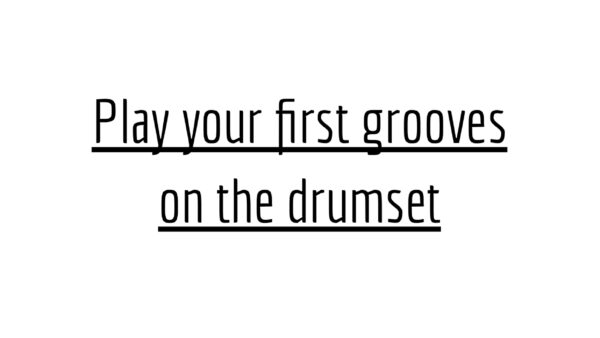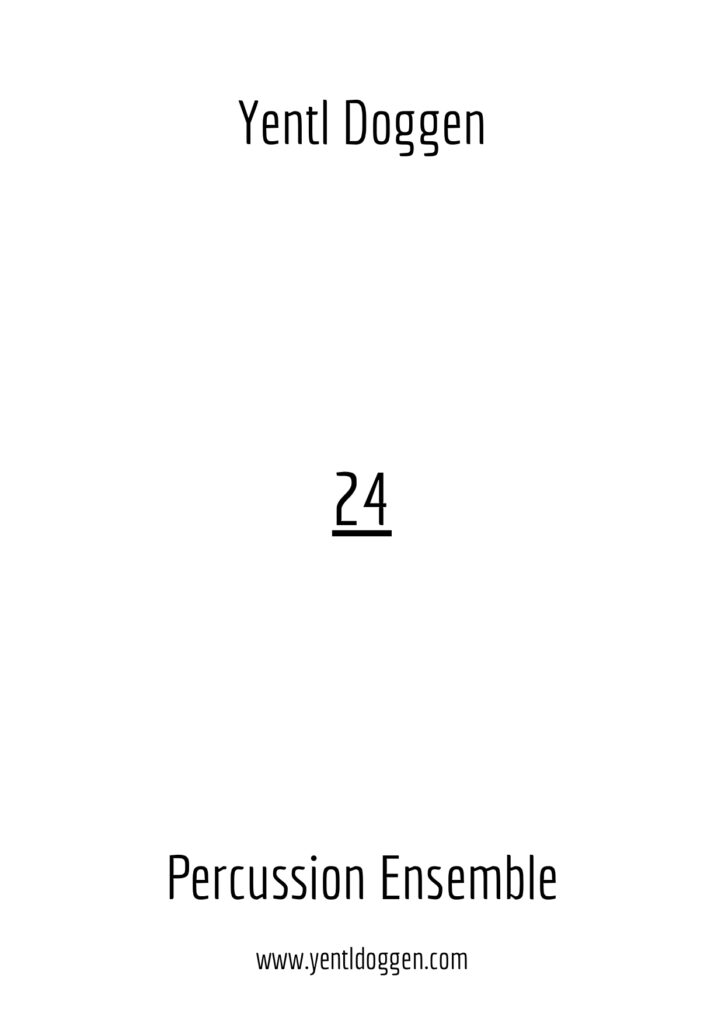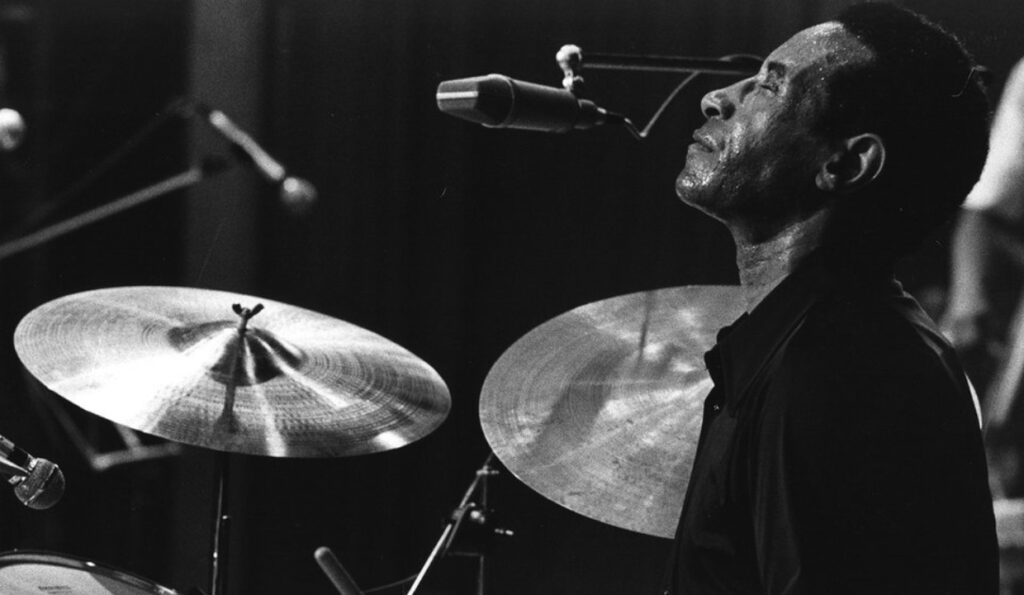Drum Exercises, Music
How to play your first groove on the drumset! (4 drum lessons)
Have you never played the drum set before and want to start learning your first groove on the drumset? Well, you just struck gold with this post. This drum lesson teaches you all the basics to play the perfect first groove on the drum set. Besides, once you finish these four drum lessons, there are more drum lessons and exercises on this website to expand your knowledge. Even if you are already one of those incredibly fortunate people with already some experience on the drum set, this post is still beneficial. Since it explores all the critical basics of playing the drums, everyone has something to learn.
The following four drum lessons start with exploring independence on the drumkit. But that’s not everything! On your way to play your first groove on the drumset, you will learn not one but 15 different drum grooves. That’s a big win on your first attempt at playing the drums, if you ask me. Or an excellent way to improve some knowledge already there. Let’s get started!
How to practise these drum lessons?
For the best long-term results, I suggest practising with a metronome. The first two lessons have metronome marks, and it is best to start with the lowest speed and then slowly increase the speed. If you do not reach the maximum tempo, that isn’t a problem; instead, it is more important to be comfortable at a low rate rather than uncomfortable at high speed. The last two drum lessons do not have metronome marks for the same reason as before. It doesn’t matter how fast you can play it. It only matters that you feel comfortable playing them correctly.
Since there are also videos available of the drum lessons, it is possible to play along with them. However, it is better to study it yourself first and later check in with the video. Lastly, I suggest playing every exercise at least four times before moving on to the next practice. Playing an exercise four times in a row correctly is a good sign that the activity is well understood.
1. Exploring independence on the drumset – Slow Exercises.
The first drum lesson, which focuses on independence on the drum set, is divided into four different chapters. Every chapter puts one limb central and positions the other three limbs around it. The primary goal in these lessons is to coordinate all four limbs separately. If this is your first time behind a drum set, these exercises to explore hand and feet independence are vital in continuing the following drum lessons. If you already have experience playing the drums, you can use these as a warm-up exercise or increase the tempo.
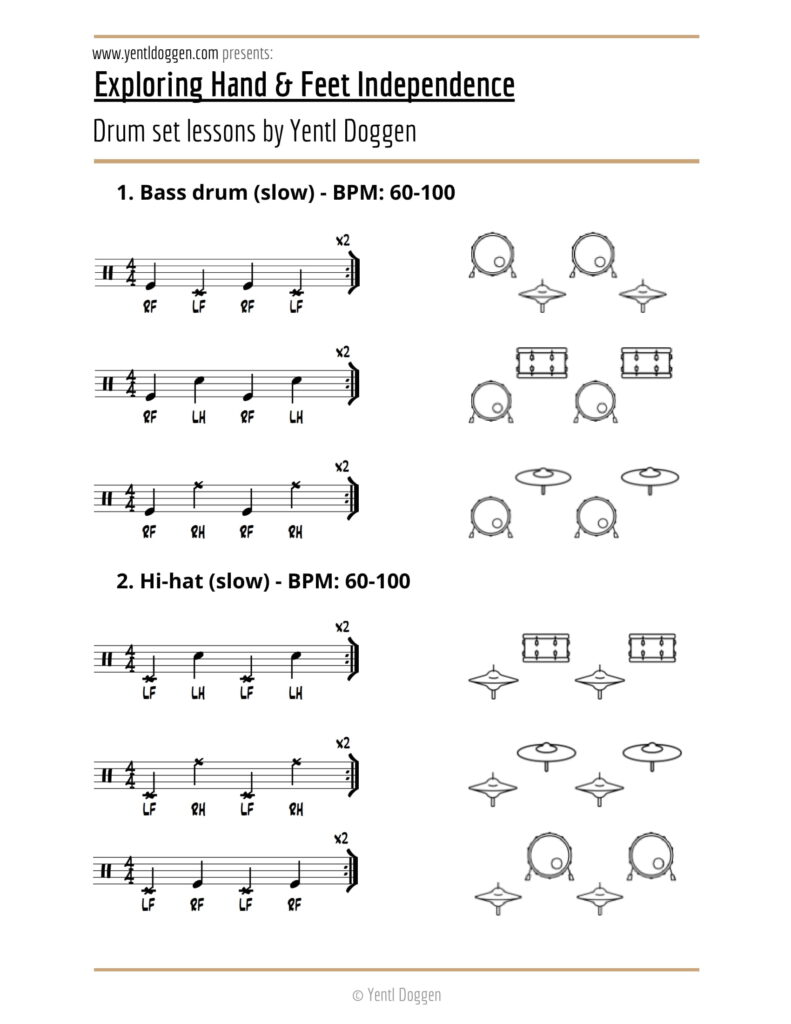
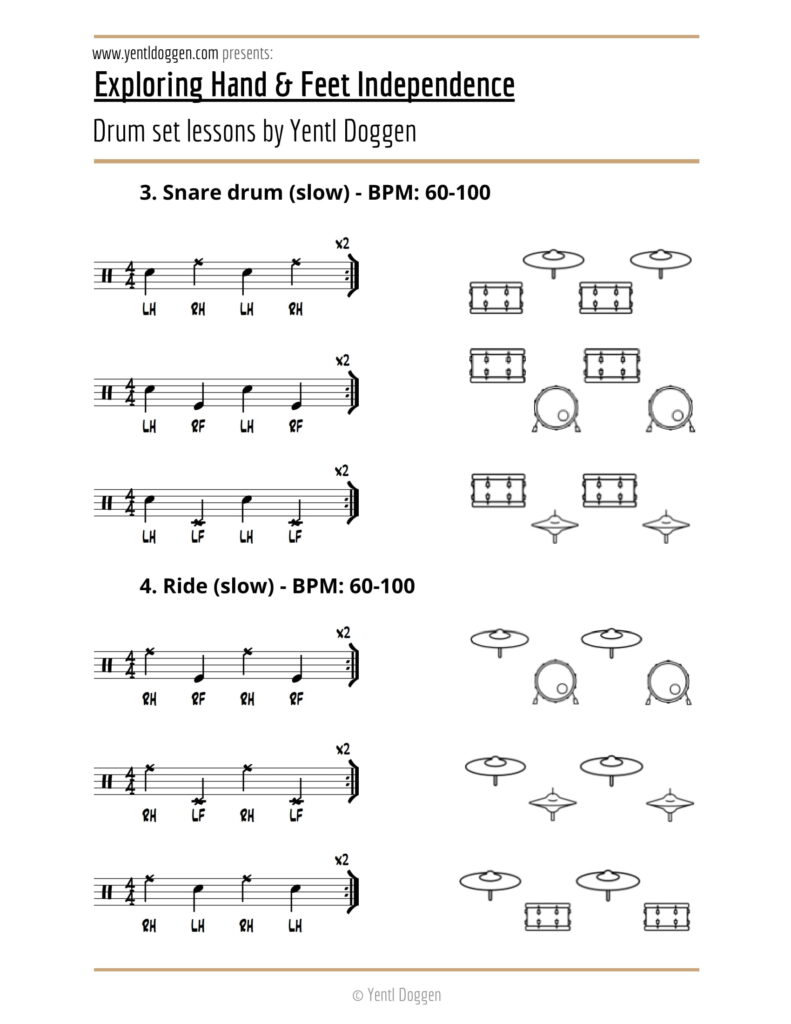
2. Exploring independence on the drumset – Fast Exercises.
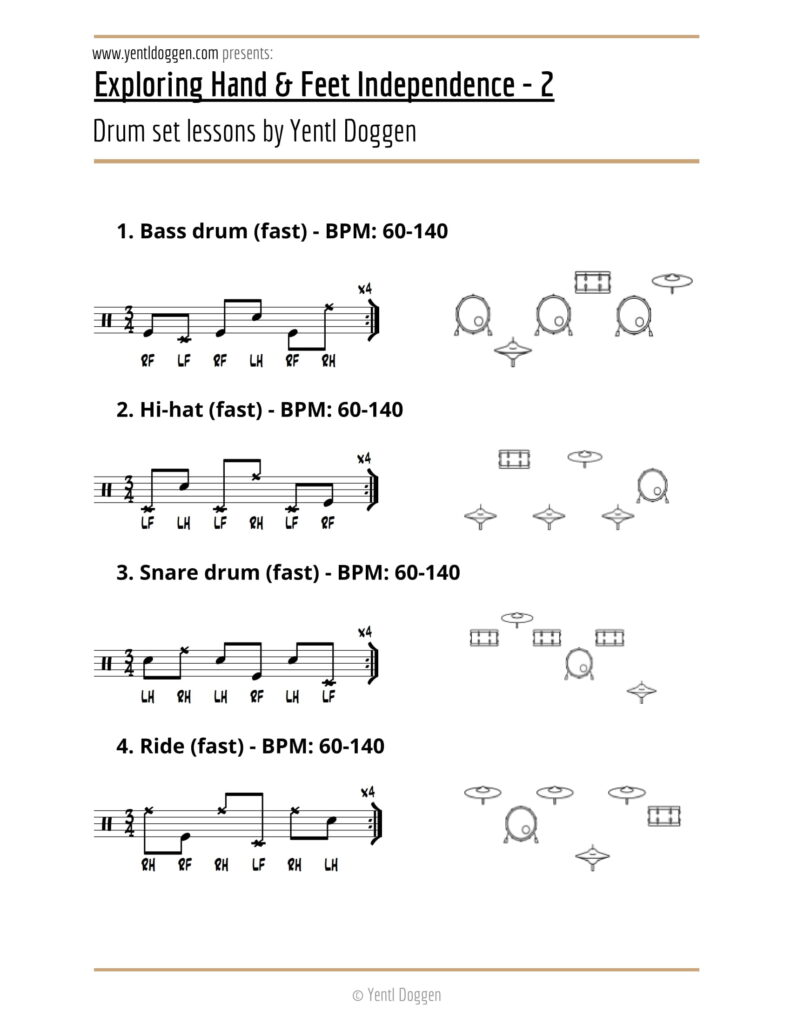
The second drum lesson is very similar to the first drum lesson. The four chapters are still there, although all the exercises are consolidated. Every chapter puts one limb central and positions the other three limbs around it, but this time it is all within the same movement. It is essential in future lessons to get this coordination right. If you struggle with this exercise on a low tempo, go back to the first drum lessons for extra study.
PDF download: how to play your first groove on the drumset!
Video for drum lessons 1 and 2 (exploring independence)
3. Playing your first groove on the drumset!
Drum lesson three gets you to play your first groove on the drumset. Although, that title is pretty misleading. The exercises we use to get to that first drum groove are grooves by themselves. By this exercise’s end, we can already play 15 drum grooves!
Drum lesson three is divided into six different sections. In the first section, you play the hi-hat simultaneously with the bass and snare drum—sections two and three mixes the first exercise up. In the second section, the bass drum takes over from the snare drum in an alternating pattern. Section three does the same but reverses the previous section. In the playing separately section, we got pretty close to playing that first groove on the drum set. In section one, you played the bass drum four times. This time, we will cut down to three, two and one bass drum. You played the snare drum four times in section one and are now cutting down to three, two and one as well. From here, it should be easy to play your basic groove! 🙂
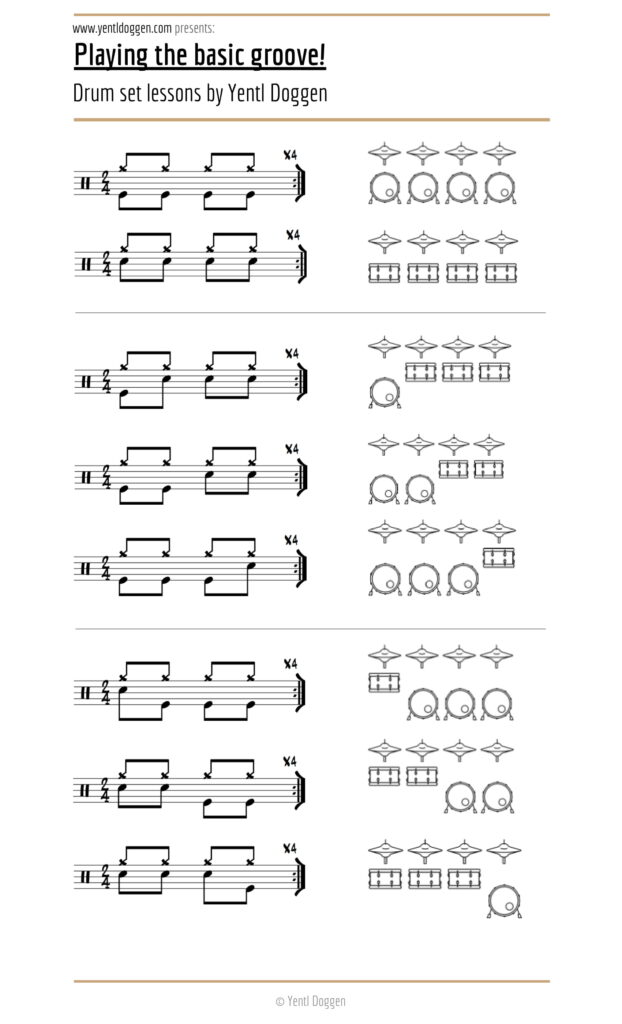
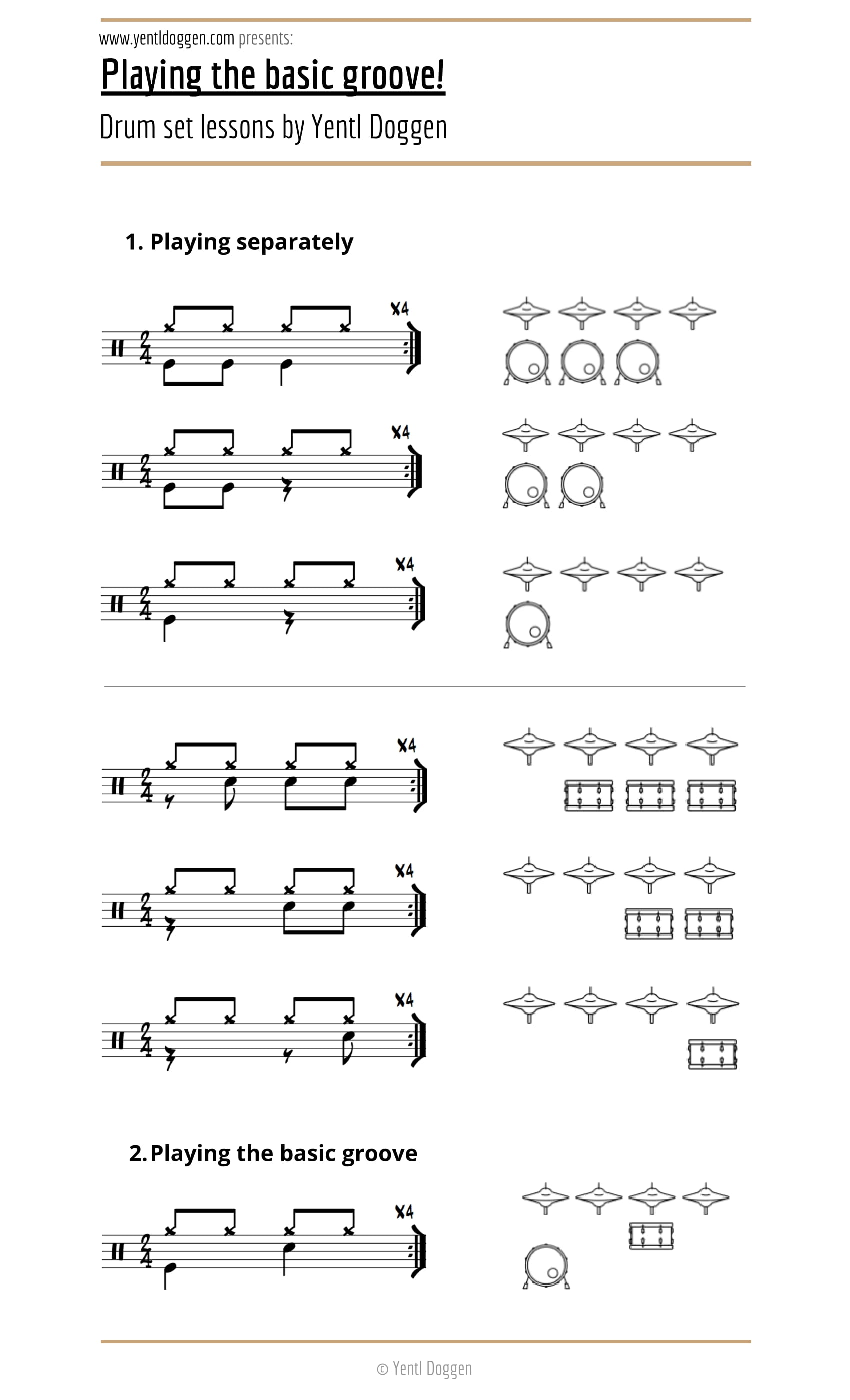
4. Improving your first groove on the drumset.
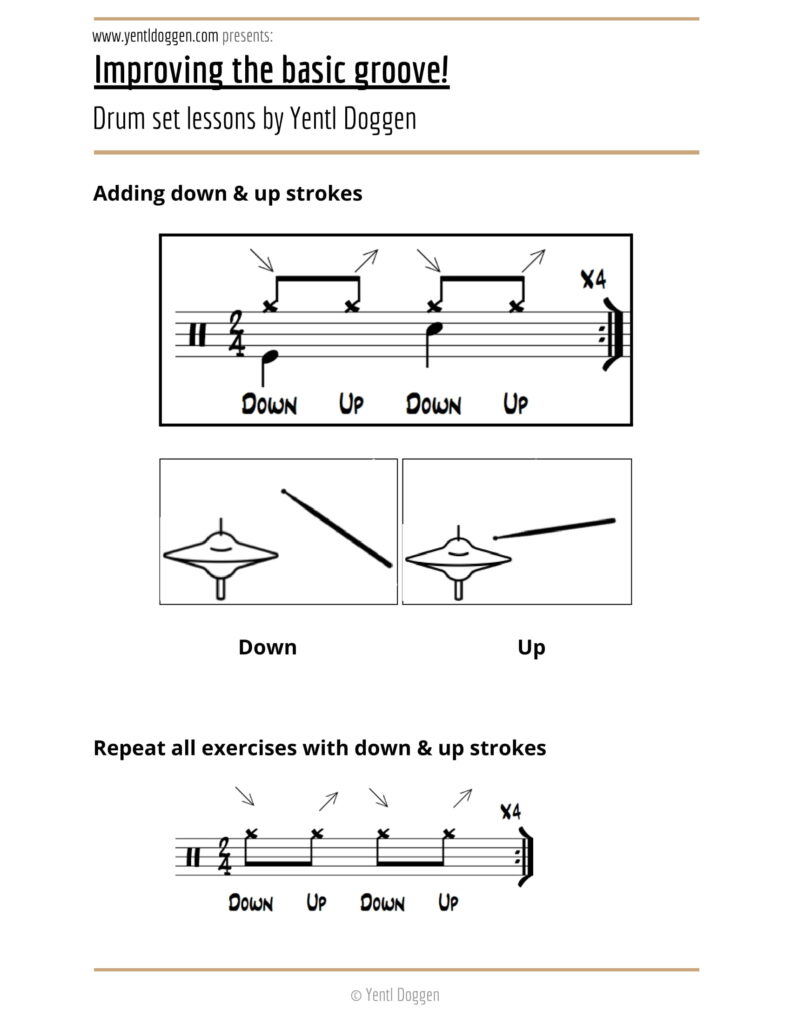
Now that you know how to play the different drum grooves, you will improve it. From here, for the rest of your drum career, you will play these grooves using the down and up motion on the hi-hat. This motion might be one of the most important ones you will ever encounter. Have a good look at the exercises. Every time the arrow points down, ensure to play your right hand on the edge of the hi-hat (down). Every time the arrow moves up, the stick bounces off the top of the hi-hat (up). This motion continues within every exercise. Make sure to slow them down and up movements before increasing the tempo. Once you got the basic groove straight, go back to all the other grooves, and practise those as well with the down and up motion! 🙂
PDF download: how to play your first groove on the drumset!
Video for drum lessons 3 and 4 (your first groove on the drumset)
Are you finished with these four drum lessons? Take a look at the next available course. Where this lesson was all about playing your first groove, the next lesson expands your independence on the drumset, using that first groove you just learned! 🙂
This drum independence post for beginners is the first drum lessons and exercises post of many to follow. If this lesson was helpful for you, please let me know in the comments below. Suggestions and questions are welcome, and I’ll try to answer them as soon as possible. Good luck, and I’ll get back to you with more drum lessons and exercises!
My website has multiple ways to keep in the loop with music and travel-related updates. Make sure to follow my Instagram and Facebook pages to get the latest content on your socials. To get the updates in your mailbox, subscribe to the newsletter. I will post plenty of free drum lessons and other music and drum-related advice on this website in the future! Check out the drum transcriptions and analysis if you haven’t already. We can’t build this platform without our readers, so we thank you for your continued support. Stay tuned for many more to come!


